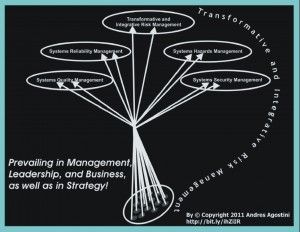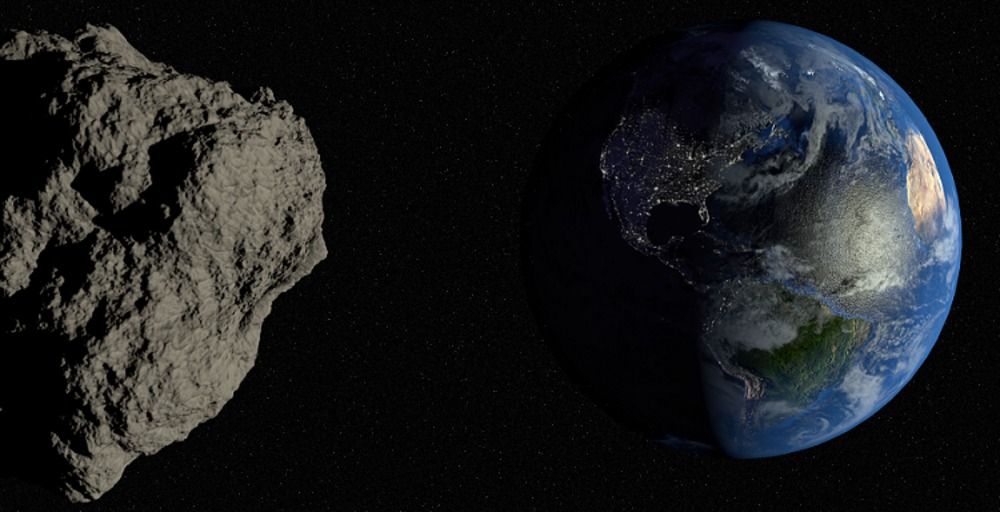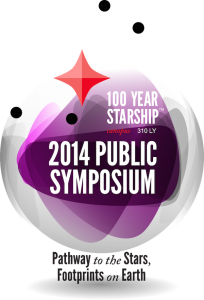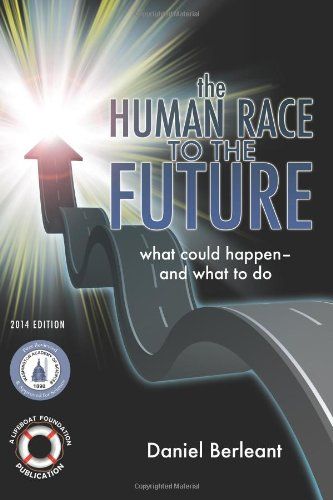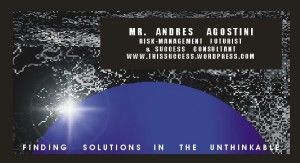FEBRUARY 08/2014 LIST OF UPDATES. By Mr. Andres Agostini at The Future of Scientific Management, Today! At http://lnkd.in/bYP2nDC
MITRE-Harvard nanocomputer may point the way to future computer miniaturization
http://www.kurzweilai.net/mitre-harvard-nanocomputer-may-point-the-way-to-future-computer-miniaturization
New form of graphene allows electrons to behave like photons
http://www.kurzweilai.net/new-form-of-graphene-allows-electrons-to-behave-like-photons
The first flexible, transparent, and conductive material
http://www.kurzweilai.net/the-first-flexible-transparent-and-conductive-material
Adidas Says Under Armour Infringed Its Wearable-Tech Patents
http://www.businessweek.com/articles/2014-02-05/adidas-says-under-armour-infringed-its-wearable-tech-patents
The Best Science and Engineering Visualizations of 2013
http://www.wired.com/wiredscience/2014/02/2013-sciviz-winners/
How To Keep Museums Alive In The Age Of Minecraft
http://www.fastcolabs.com/3026074/how-to-keep-museums-alive-in-the-age-of-minecraft
Disrupting Death: These Customized Tombstones Let You Take Your Colorful Personality To The Grave
http://www.fastcocreate.com/3025033/disrupting-death-these-customized-tombstones-let-you-take-your-colorful-personality-to-the-g
SolarCoin cryptocurrency pays you to go green
http://www.newscientist.com/article/dn25010-solarcoin-cryptocurrency-pays-you-to-go-green.html#.UvQTboXSmHc
Bio-Hackers Pore Through A Child’s DNA For The Source of A Mysterious Disease
Bio-Hackers Pore Through A Child’s DNA For The Source of A Mysterious Disease
Man With 3-D Printer Prints 3-D Printer That Prints 3-D Printer That Prints 3-D Printer
http://thelapine.ca/man-with-3-d-printer-prints-3-d-printer-that-prints-3-d-printer-that-prints-3-d-printer/
The death of the statistician
DSC Webinar Series: Data Contributions to a Conversational AI Platform
Ford’s data scientist: Keep all the data and sort it out later
http://gigaom.com/2014/02/06/fords-data-scientist-keep-all-the-data-and-sort-it-out-later/
How I came to love big data (or at least acknowledge its existence)
http://signalvnoise.com/posts/3315-how-i-came-to-love-big-data-or-at-least-acknowledge-its-existence
IBM opens access to SaaS portfolio to help African Universities with next-generation IT skills
http://www-03.ibm.com/press/us/en/pressrelease/43122.wss
World’s “least corrupt” nations fail to police bribery abroad
World’s “least corrupt” nations fail to police bribery abroad
Anti-Money Laundering (AML) and Counter Terrorism Financing (CTF)
http://www.bt.com.au/help/anti-money-laundering-and-counter-terrorism-financing.asp
3D Printing Central to Future Military Strategy
http://www.engineering.com/3DPrinting/3DPrintingArticles/ArticleID/7074/3D-Printing-Central-to-Future-Military-Strategy.aspx
Elio Motors and the Three Wheeled Car — A Moonshot Project
http://www.engineering.com/DesignerEdge/DesignerEdgeArticles/ArticleID/7093/Elio-Motors-and-the-Three-Wheeled-Car–A-Moonshot-Project.aspx
When will 3D Printing Reach a Mass Consumer Audience?
http://www.engineering.com/3DPrinting/3DPrintingArticles/ArticleID/7080/When-will-3D-Printing-Reach-a-Mass-Consumer-Audience.aspx
7 Steps to an Awesome Technical Presentation (Part 1 of 4)
http://www.engineering.com/Jobs/JobArticles/ArticleID/7068/7-Steps-to-an-Awesome-Technical-Presentation-Part-1-of-4.aspx
Top 10 STEM Puns
http://www.engineering.com/DesignerEdge/DesignerEdgeArticles/ArticleID/7075/Top-10-STEM-Puns.aspx
Dude, Where’s My Hydrogen Car?
http://www.engineering.com/ElectronicsDesign/ElectronicsDesignArticles/ArticleID/7070/Dude-Wheres-My-Hydrogen-Car.aspx
New Farm Bill Provides Long-Overdue Eligibility for Renewable Chemicals
http://www.bio.org/media/press-release/new-farm-bill-provides-long-overdue-eligibility-renewable-chemicals
Legislation Introduced To Communicate Prescription Changes to Patients & Physicians
http://www.bio.org/media/press-release/legislation-introduced-communicate-prescription-changes-patients-physicians
Bioscience Economic Development
http://www.bio.org/articles/bioscience-economic-development
First graphene radio broadcast is a wireless wonder
http://www.newscientist.com/article/dn24976-first-graphene-radio-broadcast-is-a-wireless-wonder.html?cmpid=RSS|NSNS|2012-GLOBAL|online-news
An nanoscale electrical switch for magnetism
http://www.nanowerk.com/nanotechnology_news/newsid=34222.php
How to Make a Better Invisibility Cloak—With Lasers
http://spectrum.ieee.org/semiconductors/materials/how-to-make-a-better-invisibility-cloakwith-lasers
Can Graphene Enable Thermal Transistors?
http://spectrum.ieee.org/nanoclast/semiconductors/materials/can-graphene-enable-thermal-transistors?utm_source=feedburner&utm_medium=feed&utm_campaign=Feed%3A+IeeeSpectrumSemiconductors+%28IEEE+Spectrum%3A+Semiconductors%29
A new twist to sodium ion battery technology
http://www.materialstoday.com/energy/news/a-new-twist-to-sodium-ion-battery-technology/
New “Photodetector” Nanotechnology Allows Photos in Near Darkness
http://www.azonano.com/news.aspx?newsID=29284
Self-aligning DNA wires have been constructed for nanoelectronics
http://www.rdmag.com/news/2014/01/self-aligning-dna-wires-have-been-constructed-nanoelectronics
Nanocatalyst helps a greenhouse gas turn over a new leaf
http://www.nanowerk.com/nanotechnology_news/newsid=34230.php
IBM claims to make “first fully functioning” graphene IC
IBM claims to make “first fully functioning” graphene IC
Quantum dots provide complete control of photons
http://www.rdmag.com/news/2014/01/quantum-dots-provide-complete-control-photons
Quicker method paves the way for atomic-level design
http://www.nanowerk.com/nanotechnology_news/newsid=34226.php#ixzz2sark76Sf
Rice lab clocks “hot” electrons
http://www.rdmag.com/news/2014/01/rice-lab-clocks-%E2%80%9Chot%E2%80%9D-electrons
Arianespace Successfully Delivers Its 250th Launch
http://www.forbes.com/sites/alexknapp/2014/02/06/arianespace-successfully-delivers-its-250th-launch/?utm_campaign=techtwittersf&utm_source=twitter&utm_medium=social
From Occupy to Climate Justice
http://www.thenation.com/article/178242/occupy-climate-justice?page=0,1
Chinese Factories Are Ordered to Release Data on Real-Time Emissions Levels
http://www.businessweek.com/articles/2014-02-06/chinese-factories-ordered-to-release-data-on-real-time-emissions-levels
When Will Genomics Cure Cancer?
http://www.theatlantic.com/magazine/archive/2014/01/when-will-genomics-cure-cancer/355739/
Visitors to Sochi Olympics will be instantly hacked
http://sports.yahoo.com/news/visitors-to-sochi-olympics-will-be-instantly-hacked-201318818.html
FAO Food Price Index falls despite climbing dairy prices
http://www.fao.org/news/story/en/item/213481/icode/?utm_source=twitter&utm_medium=social+media&utm_campaign=FAOnews&utm_content=gk
Tapstream Is Making Mobile Ads Smarter With “Deferred Deep Links,” A Way To Point Users To App Landing Pages After They Install
Tapstream Is Making Mobile Ads Smarter With “Deferred Deep Links,” A Way To Point Users To App Landing Pages After They Install
23AndMe Will Decode Your DNA for $1,000. Welcome to the Age of Genomics
http://www.wired.com/medtech/genetics/magazine/15-12/ff_genomics?currentPage=all
20 unpronounceable tech brands — and how to say them
http://www.itworld.com/it-management/403502/20-unpronounceable-tech-brands-and-how-say-them
Can Twitter’s Big Data Influence The Music Business?
http://www.forbes.com/sites/bobbyowsinski/2014/02/06/can-twitters-big-data-influence-the-music-business/?utm_campaign=techtwittersf&utm_source=twitter&utm_medium=social
Venture capital’s stunning lack of female decision-makers
http://finance.fortune.cnn.com/2014/02/06/venture-capitals-stunning-lack-of-female-decision-makers/?utm_content=bufferfddfe&utm_medium=social&utm_source=twitter.com&utm_campaign=buffer
Artificial intelligence: the companies behind Britain’s ‘smart’ revolution
http://www.telegraph.co.uk/technology/news/10610734/Artificial-intelligence-the-companies-behind-Britains-smart-revolution.html
As artificial intelligence grows, so do ethical concerns
http://www.sfgate.com/technology/article/As-artificial-intelligence-grows-so-do-ethical-5194466.php
Computing with silicon neurons: Scientists use artificial nerve cells to classify different types of data
http://www.sciencedaily.com/releases/2014/01/140128094539.htm
‘Friendly’ robots could allow for more realistic human-android relationships
http://www.sciencedaily.com/releases/2014/02/140206082401.htm
6 Exponential Technologies of Tomorrow
http://www.wfs.org/content/6-exponential-technologies-tomorrow
Anti-ageing compound set for human trials after turning clock back for mice
http://www.theguardian.com/science/2013/dec/20/anti-ageing-human-trials
U.S. Agencies Take Significant Step Toward Wirelessly Connecting Vehicles To One Another
U.S. Agencies Take Significant Step Toward Wirelessly Connecting Vehicles To One Another
New Stratasys 3D Printer Makes Multi-Material, Full Color Parts in a Single Run
New Stratasys 3D Printer Makes Multi-Material, Full Color Parts in a Single Run
Do You Trust Internet-Connected Appliances Enough To Let Them Run Your Home?
Do You Trust Internet-Connected Appliances Enough To Let Them Run Your Home?
Illumina Claims New Sequencer Transcribes 18,000 Genomes per Year at $1,000 Each
Illumina Claims New Sequencer Transcribes 18,000 Genomes per Year at $1,000 Each
Simple Method for Creating Stem Cells Promises Cheaper, Faster Therapies
Simple Method for Creating Stem Cells Promises Cheaper, Faster Therapies
Google’s AI Acquisition Blurs Lines Between Futuristic Visions and Business-as-Usual
Google’s AI Acquisition Blurs Lines Between Futuristic Visions and Business-as-Usual
Rejections for Sandy Grants Are Questioned
http://online.wsj.com/news/articles/SB10001424052702303496804579365431674359994?mg=reno64-wsj&url=http%3A%2F%2Fonline.wsj.com%2Farticle%2FSB10001424052702303496804579365431674359994.html&mod=e2tw
New Inexpensive Skin Test in Development to Diagnose Malaria in an Instant
New Inexpensive Skin Test in Development to Diagnose Malaria in an Instant
uArm, A Mini Robotic Arm You Can Assemble and Control
uArm, A Mini Robotic Arm You Can Assemble and Control
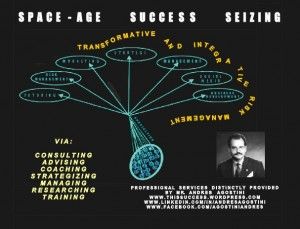
QUOTATION(S): “…It is far better to grasp the universe as it really is than to persist in delusion, however satisfying and reassuring…” AND “…Everything’s fine today, that is our illusion…”
CITATION(S): “…HUMAN KNOWLEDGE IS DOUBLING EVERY TEN YEARS [AS PER THE 1998 STANDARDS].…COMPUTER POWER IS DOUBLING EVERY EIGHTEEN MONTHS. THE INTERNET IS DOUBLING EVERY YEAR. THE NUMBER OF DNA SEQUENCES WE CAN ANALYZE IS DOUBLING EVERY TWO YEARS…”
BOOK(S): Physics of the Future: How Science Will Shape Human Destiny and Our Daily Lives by the Year 2100 by Michio Kaku. ISBN-13: 978–0307473332
Regards,
Mr. Andres Agostini
Risk-Management Futurist
and Success Consultant
http://lnkd.in/bYP2nDC
